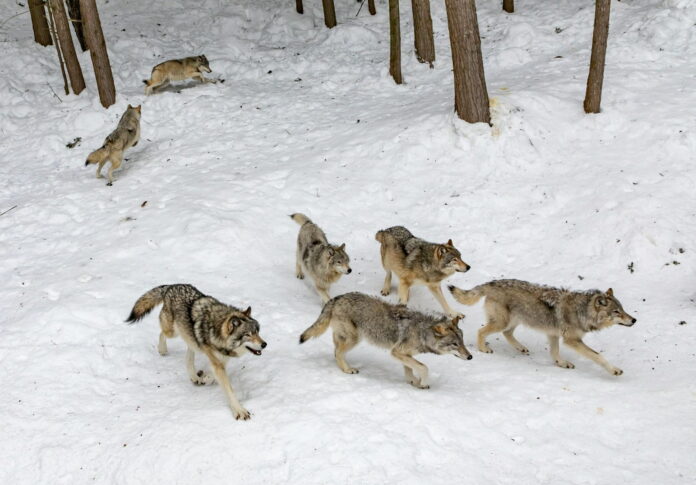The concept of animal reintroduction, a process where species are re-established in habitats from which they have been extirpated or extinct, is one that garners considerable attention within conservation circles. This pursuit is not solely a matter of ecological restoration but also an endeavor rife with ethical implications. To understand the full scope of the practice, it is essential to examine the rationale behind such efforts, the ethical considerations that must be navigated, and to reflect on case studies where reintroduction has led to success. Through balancing the intricate interplay between human interests, ecological integrity, and animal welfare, the ethics of animal reintroduction present a compelling topic worthy of comprehensive exploration.
The Rationale Behind Reintroduction
The rationale for animal reintroduction is often anchored in the desire to correct past human-induced wrongs, such as overhunting, habitat destruction, or the unintended consequences of introduced species. By reintroducing animals to their former habitats, conservationists aim to restore ecological balance, enhance biodiversity, and strengthen the resilience of ecosystems. This is not only beneficial for the environment but can also offer economic and social advantages, such as boosting ecotourism or reinforcing cultural ties to native wildlife.
Another impetus for reintroduction is the role it plays in preserving genetic diversity. As human activities continue to shrink the natural living spaces of various species, the genetic pool becomes increasingly limited, posing a threat to the long-term survival of species. Reintroduction can serve as a mitigation strategy to broaden the genetic horizon and ensure the continuation of evolutionary processes. Moreover, reintroduced species can act as umbrella species, fostering conservation actions that benefit multiple species and habitats within their range.
Lastly, reintroductions often serve an educational purpose, raising public awareness about conservation issues and the importance of maintaining healthy ecosystems. They can change public perceptions of wildlife and foster a deeper connection between people and the natural world. This, in turn, may lead to increased support for conservation initiatives and policies that prioritize environmental sustainability.
Ethical Considerations Explored
Navigating the ethics of animal reintroduction involves a careful consideration of animal welfare, ecological ethics, and the interests of local human communities. The welfare of individual animals being reintroduced is a paramount concern, where the potential for suffering during capture, transit, and release must be weighed against the long-term benefits to the species and ecosystems. The process must be meticulously planned to minimize stress and ensure the animals have the best possible chance of survival in their new environment.
Ecological ethics demand that reintroduction efforts do not inadvertently cause harm to the destination habitat or its current inhabitants. The introduction of a species to an ecosystem where it has been absent for an extended period could disrupt existing species relationships and ecological processes. Thus, thorough research and careful planning are critical to assess potential impacts and to ensure that the reintroduction will not result in unintended ecological consequences.
Furthermore, the interests and perspectives of local human populations cannot be overlooked. Reintroduction projects may conflict with local land uses, such as agriculture or development, and can lead to human-wildlife conflicts. Engaging with and securing the support of local communities is essential for the long-term success of reintroduction projects. This includes addressing concerns, providing education, and where possible, ensuring that the local population benefits from the reintroduction.
Case Studies: Reintroduction Successes
One exemplary case of successful animal reintroduction is the return of wolves to Yellowstone National Park in the United States. The reintroduction of gray wolves in the mid-1990s has been hailed as a triumph for ecosystem restoration, as their presence has helped control elk populations and allowed vegetation and stream environments to recover. This, in turn, has benefited other species, showcasing the cascading effects that a keystone species can have on an ecosystem.
In Europe, the reintroduction of the Eurasian beaver has demonstrated positive ecological impacts across multiple countries. The beavers’ natural behaviors, such as dam-building, have created wetlands that support a rich diversity of life and improve water quality. This has not only restored a species to its historical range but has also provided substantial ecological services that benefit both nature and people.
Another success story is the return of the Arabian oryx, which was once extinct in the wild. Through captive breeding and careful reintroduction efforts, the oryx has been re-established in protected areas of the Arabian Peninsula. This has not only saved a species from the brink of extinction but also served as an emblem of national pride and a catalyst for broader conservation efforts in the region.
The practice of animal reintroduction is a complex interplay of ecological restoration, ethical considerations, and human values. While the rationale for reintroduction is often clear-cut, aiming to repair ecological damage and enhance biodiversity, the ethical landscape requires a nuanced approach that respects both the welfare of individual animals and the integrity of ecosystems. Case studies of successful reintroductions provide valuable lessons and hope for future endeavors. As we continue to grapple with the challenges of conservation in an increasingly human-dominated world, the ethics of animal reintroduction remind us of our responsibilities to the other species with whom we share our planet and the delicate balance we must maintain to ensure a harmonious coexistence.
